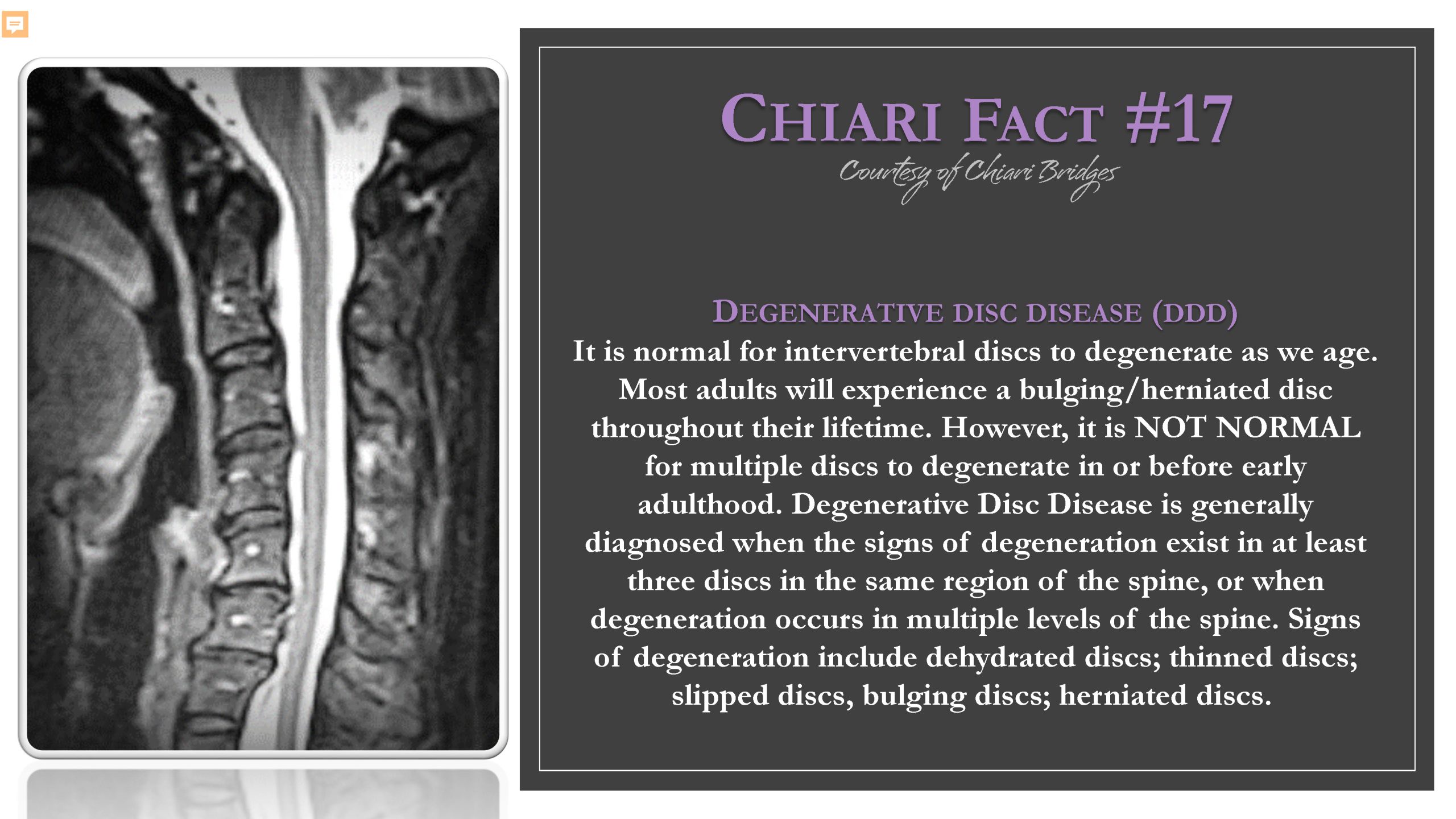Chiari Fact #17

Degenerative Disc Disease (DDD) is common to those with Chiari, but they DO NOT have a pathological relationship (where one causes the other). The two conditions are just considered “comorbid” to one another – meaning they are known to co-exist (and that is not without reason). The reason so many of us have DDD is that they both can be related to Heritable Disorders of Connective Tissues (HDCTs) such as Ehlers-Danlos Syndrome (EDS).
By far, our cervical spines seem to have the most disc degeneration. This could have to do with the smaller-sized vertebrae in the cervical spine, calling for an increase in connective tissue in the centralized location. Unlike Craniocervical Instability, which is related to the connective tissue surrounding the C1 (the atlas) and the C2 (the axis), when the discs (which are considered connective tissues) between the C3-C7 are problematic, it can become what is known as Cervical Instability (also referred to as subaxial instability or SAI). Both Craniocervical Instability (CCI) and Cervical Instability cause the “bobble-headed” feeling, where it feels like our necks lack the strength to hold up our heads.
For more on the relationships between Degenerative Disc Disease, Chiari Malformations, and Ehlers-Danlos Syndromes:

